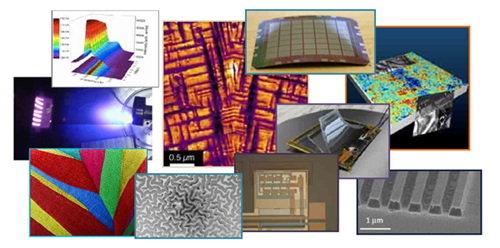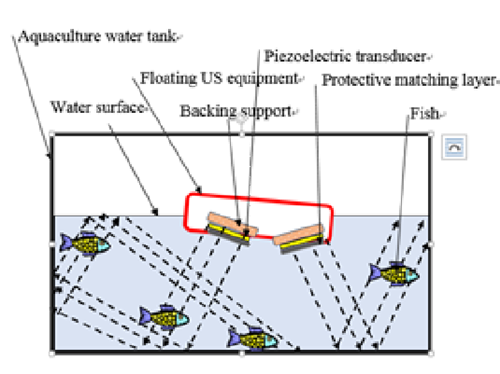SEMINAR
Shanghai Institute of Ceramics, Chinese Academy of Sciences
Synthetic Single Crystal Research Center
中 国 科 学 院 上 海 硅 酸 盐 研 究 所 人 工 晶 体 研 究 中 心
Talk 1: Piezoelectric Films for Microelectromechanical Systems
报告一:压电薄膜微机电系统
Speaker:Susan Trolier‐McKinstry
Penn State University
Professor of Ceramic Science and Engineering and Electrical Engineering
Director, W.M. Keck Smart Materials Integration Laboratory
Director, Nanofabrication Facility
时间: 2016年4月 20日(星期三)上午9:00
地点:长宁园区4号楼14楼2号会议室
Susan Trolier-McKinstry is a professor of ceramic science and engineering at The Pennsylvania State University, where she also serves as the director of the W. M. Keck Smart Materials Integration Laboratory and co-director of the Nanofab. She obtained B.S., M.S. and Ph.D. degrees in Ceramic Science and Engineering, all from Penn State. On graduation she joined the faculty there. She is a fellow of IEEE and the American Ceramic Society, and is an academician of the World Academy of Ceramics. She was also the recipient of National Security Science and Engineering Faculty Fellowship, the IEEE Ferroelectrics Achievement Award, and the Ceramic Education Council Outstanding Educator Award, among others.
Her main research interests include thin films for dielectric and piezoelectric applications. Her group studies the fundamental mechanisms that contribute to the measured properties, processing studies for electroceramic films, and integration of functional materials into microelectromechanical systems. She has co-authored >320 papers in these areas, and has several patents. Twenty former members of her group are now faculty members around the world; others have taken jobs with companies and national laboratories.
She is currently an associate editor for Applied Physics Letters, the Journal of the American Ceramic Society, and the IEEE Transactions on Ultrasonics, Ferroelectrics, and Frequency Control. She has also served as the President of the Ceramics Education Council and the IEEE Ultrasonics, Ferroelectrics, and Frequency Control Society; she recently completed a term on the Board of Directors for the Materials Research Society.
Abstract
Piezoelectric thin films are of increasing interest in low voltage microelectromechanical systems (MEMS) for sensing, actuation, and energy harvesting. They also serve as model systems to study fundamental behavior in piezoelectrics. The seminar will discuss how materials are optimized for these applications, as well as examples of the use of piezoelectric films over a wide range of length scales. The key figures of merit for actuators and energy harvesting will be discussed, with emphasis on how to achieve these on practical substrates. For example, control of the domain structure of the ferroelectric material allows the energy harvesting figure of merit for the piezoelectric layer to be increased by factors of 4 - 10. Likewise, control of crystallographic orientation and substrate clamping enables large increases in the figure of merit for actuators. To illustrate the functionality of these films, examples of integration into MEMS structures will also be discussed, including adaptive optics for Xray telescopes, low frequency and non-resonant piezoelectric energy harvesting devices, and piezoelectronic transistors as a potential replacement for CMOS electronics.

Talk 2: Relaxor Single Crystals & New Applications of Bioultrasonics
报告二:弛豫铁电单晶及在生物超声的新应用
Speaker:Yohachi (John) Yamashita
Faculty of Engineering of Toyama Prefectural University
时间: 2016年4月 20日(星期三)上午10:30
地点:长宁园区4号楼14楼2号会议室
Yohachi (John) Yamashita was born in Kagoshima, Japan in 1951. He joined Toshiba Corp. in 1969 and started piezoelectric, dielectric, transducer, relaxor single crystal materials research job. He wrote 130 peer-reviewed papers, 320 Japanese and international patents, 7 book chapters and one book. He received a Ph.D. degree in Materials Science from Waseda Univ., Japan in 2000. After quitting Toshiba in 2013, he started his current post as a research specialist at the Dep. Of Intelligent Systems Design Engineering in Toyama Prefectural Univ., Toyama, Japan. His current research focused on sonic and ultrasonic stimulation for aquaculture fishes, plants, small mammals, and mankind.
Abstract:
Perovskite structure of BaTiO3 and Pb(Zr,Ti)O3 ceramics discovered in 1940 to 1960 were the 1st generation piezoelectric material. These two materials developed a huge market of dielectric capacitors and sonar, buzzer and various types of transducers applications.
Perovskite relaxor single crystals, Pb(Me,Nb)O3-PbTiO3, (Me=Mg, Zn, In), discovered in 1980 to 2010 were the 2nd generation piezoelectric material. These materials have used for a high-end medical ultrasonic diagnostic equipment and sonar applications. The world-record highest piezoelectric constant of d33=3930 pC/N of the relaxor based single crystal was reported by author with a smart composition design and the special poling process.
However, author think that there is no innovative inorganic piezoelectric material beyond these 1st and 2nd generation materials and applications, and now is the best time to find a new generation piezoelectric materials and applications.
Bio-Ultra-Sounds (BUS), a new concept of combining biotechnology and sonic and ultrasonic (SUS) is demonstrated as 3rd generation piezoelectric material and applications. The research concept is based on induced piezoelectricity by the SUS stimulation of all living cells and matters. It is well known that all living matters, plants, woods, fishes, shells and animals are piezoelectric materials. These piezoelectric materials generates piezoelectric current when mechanical stresses are applied. A feasibility study of the BUS stimulation for aquaculture fish was conducted and a higher survival rate of several fishes from the BUS-stimulated group was obtained. The SUS stimulation is demonstrated to be effective for a higher growth rate of animal bone and a high survival rate for living fishes. Three BUS research phases are introduced, including Phase I: Plants and fishes, Phase II: Small mammals, and Phase III: Mankind, and the tasks in each phase are proposed. The BUS technology may contribute to the development of new applications of piezoelectricity, SUS, and biotechnology, and it could help to solve world food shortage and create a new low-cost medicine area for healthcare in the future.

欢迎各位老师同学光临!


 当前位置:
当前位置:

